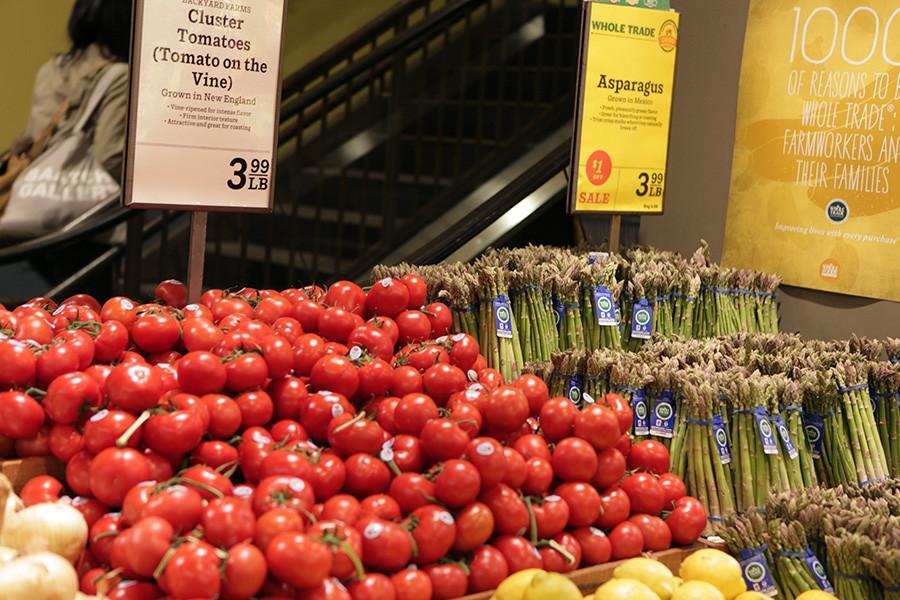Spring snacks for shaking winter blues
It’s important
March 31, 2015
Although our coats have not yet been banished to the back of our closets, spring was officially upon us March 20. It may not be time yet to bid our cold weather gear farewell, but it is time to do so with our winter fruits and vegetables.
As winter’s hearty fruits and vegetables leave us, the fresh green flavors of spring vegetables and fruits have arrived in their place. Unlike winter produce, spring fruits and vegetables are more delicate than the hardy winter produce and often possess more vibrant colors. Spring vegetables include: asparagus, artichokes, peas, fava beans and spring baby lettuce. Spring fruits include: apricots, honeydew, rhubarb and strawberries.
These fruits and vegetables do not need much cooking, and should not be forced into stews and other time-intensive cooking techniques. For vegetables such as green beans and asparagus, you can simply steam or roast them in the oven with a little olive oil and a sprinkle of salt and pepper. Apricots, honeydew and strawberries can be eaten raw or in a bowl of yogurt. Rhubarb has a very short season in early spring and although it is too tart to be eaten raw, is delicious when cooked with strawberries in a tart or crumble.
All fruits and vegetables are nutritionally beneficial, but certain spring produce rises above others in their health benefits. Asparagus is high in folate, a vitamin that promotes cardiovascular and nervous system health and is needed for DNA replication. Green beans have a high concentration of antioxidants, and research has also shown that green beans contain enzymes that might reduce the chance of developing Type 2 diabetes. Strawberries rank number four on the list of fruits with the highest concentration of antioxidants and also possess anti-inflammatory enzymes as green beans. Strawberries are also a delicious source of natural sugar, which is healthier than the processed sugar found in other sweet foods.
Try out this recipe for asparagus quinoa salad for a nutritional and tasty meal.
Vegetable Quinoa Salad
Ingredients
-1 cup quinoa
-2 cups veggie/chicken stock
-1 bunch asparagus
-1 tablespoon olive oil
-salt and pepper
-1 bunch russian kale, rough chopped
-1/3 cup raisins
-2 tablespoons balsamic vinegar
-1 garlic clove, minced
-1 shallot, chopped
-3 tablespoons olive oil
-prosciutto, sliced
-salt and pepper
1. Bring pot of stock to a boil. Add quinoa, return to a boil and then reduce to a simmer for 12 minutes. Remove from heat and fluff with a fork after 15 minutes.
2. Take asparagus and peel the outer dark green stem. Rub with olive oil, salt and pepper and place on a sheet pan. Roast for 25 minutes at 400 degrees. Set aside with the quinoa.
3. Oil a medium sized skillet. Sauté the shallot until soft. Add the garlic and sauté until aromatic. Then add the kale, prosciutto, raisins, balsamic vinegar, a little more olive oil and some salt and pepper. Cook until the kale is wilted and the flavors have combined.
4. Chop up the asparagus and add it to a bowl with the quinoa and kale mixture. Add more olive oil, balsamic vinegar, salt and pepper to taste.
A version of this article appeared in the Tuesday, Mar. 31st print edition. Email Olivia at [email protected].












































































































































